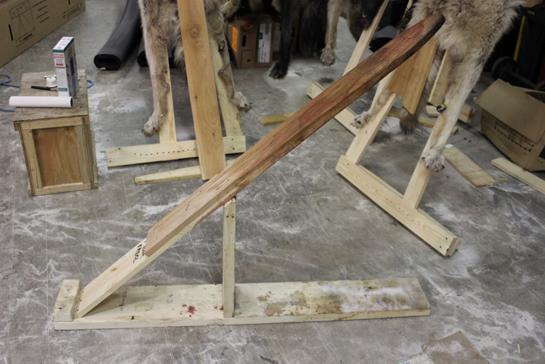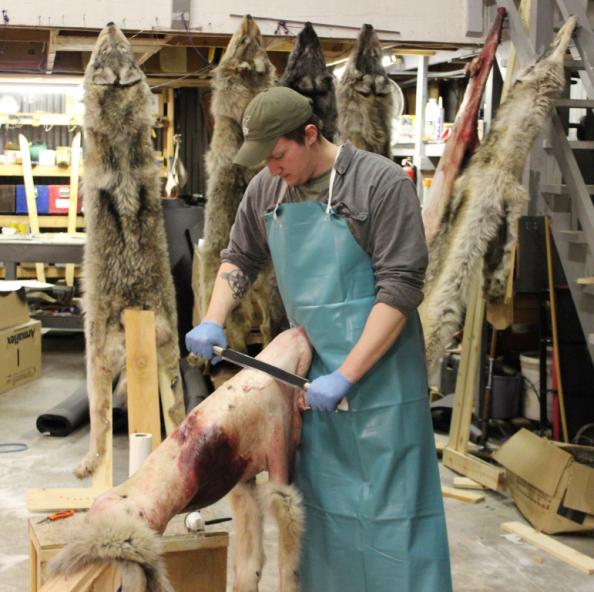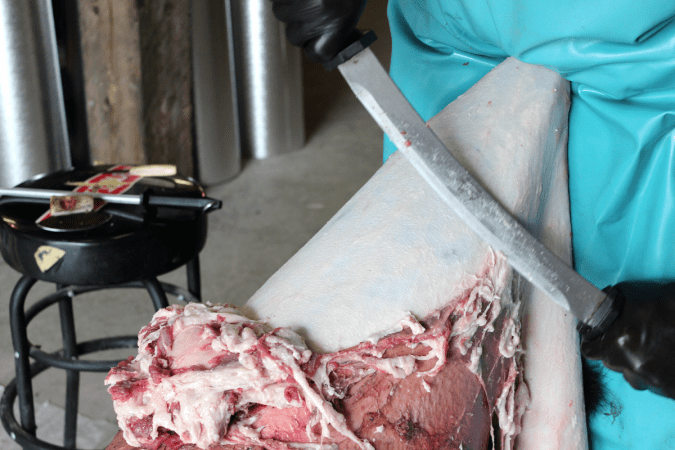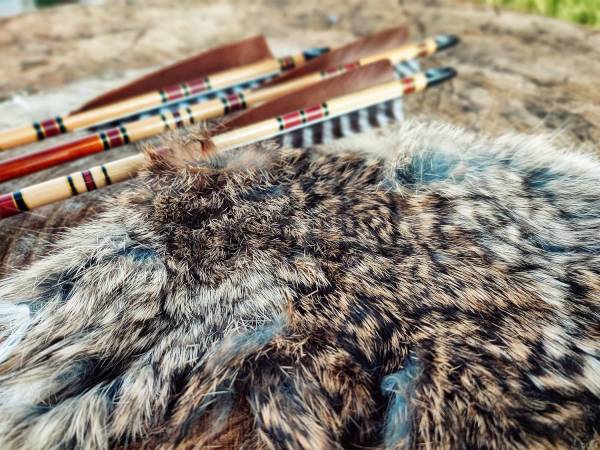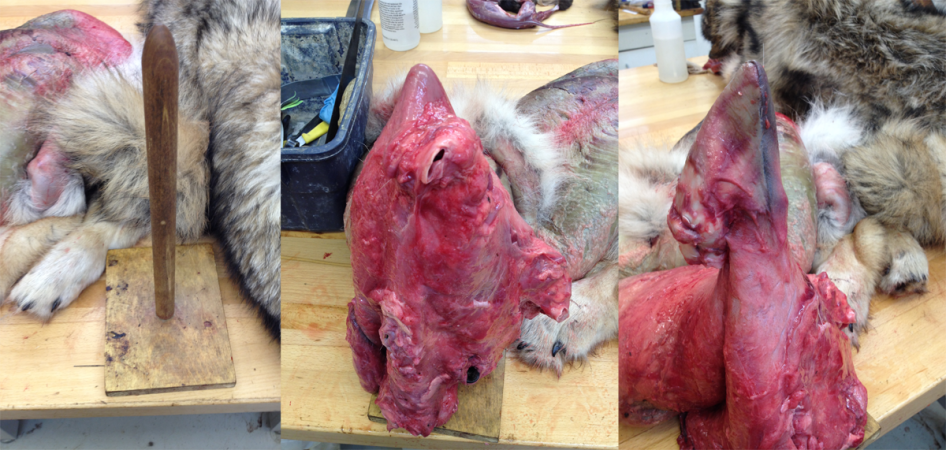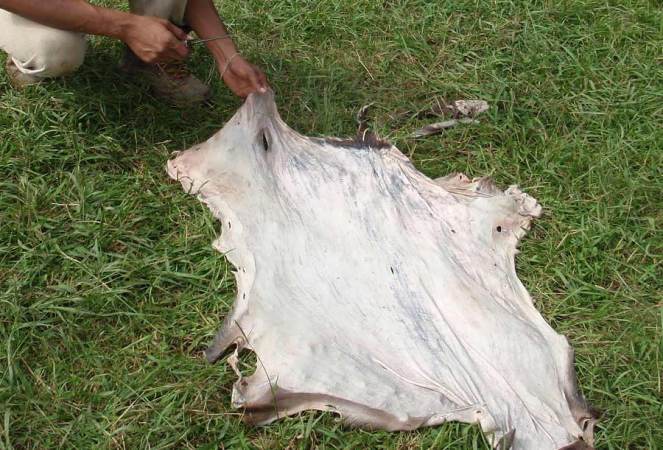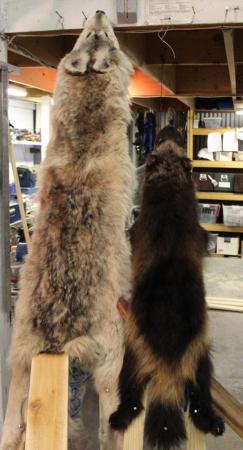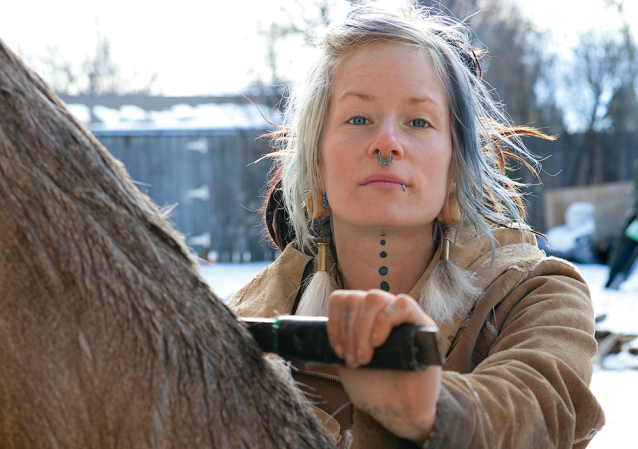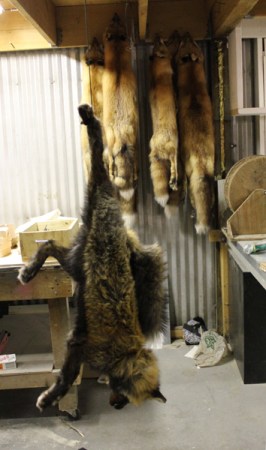If you ever plan on dealing with large quantities of hides, whether it’s deer, beaver, or wolves, one of the most important pieces of gear to have is a fleshing beam. Although you can get away with not fleshing some smaller critters, most hides require a good fleshing job, and when dealing with a high volume, you’ll quickly find yourself overwhelmed if you don’t have a beam.
With a fleshing beam and a draw knife you can scrape off all the flesh and fat much faster, and with much less hide damage, than with a regular knife.
How to Build the Beam
Using a few basic guidelines you can build a fleshing beam out of a variety of materials, often for little to no cost. The one I built this year cost me around $30, but only because I didn’t have the time to dig around for free stuff. I built mine out of one 2×10 (for the base), one 1×6 pine board, and one piece of 1×6 oak (the oak is used for the scraping surface). Like most guys, I like a bit of an angle to my beam, but the exact angle isn’t critical. I made mine so that when I stand on the base with one foot, I can press against the tip of the beam with my hip to hold the hide in place while scraping. Any hard wood will work fine, but the scraping surface should be rounded, smooth, and free of knots or anything that the knife might catch on and tear the hide. One of the coolest fleshing beams I have seen was made out of PVC pipe. For mine, I screwed the oak piece on top of the pine very securely, to add rigidity, then used a jigsaw and sanding disc to round the tip of the beam (on which all of the scraping is done).
How to Use the Beam
The method for using a fleshing beam is pretty simple. The way mine is set up, I drape the hide over or around the beam, and work my way from the head down. In using the draw knife, keep in mind that you are pushing the flesh/fat off the hide, NOT cutting it off. I step on the base of my beam, and hold the hide in place by pressing my hip against it while it’s draped over the end. It’s important to note that all the scraping should be done on the top six inches or so of the beam–go any lower and it’s easy to tear the hide. Pressing with my hip, I’ll push in downward strokes with my draw knife to get the meat rolling off the hide. Sometimes I have to get it started with a knife, but once I start pushing the flesh off, it simply rolls off, and I rotate the hide on the beam, gradually working the ring of fat and meat down the hide. With this method, it actually helps to leave more meat and fat on the hide when you skin it because it gives more for the draw knife to grab.
If you deal with very many hides a good beam pays off in no time, and will save you hours of work, especially with critters like wolves.
